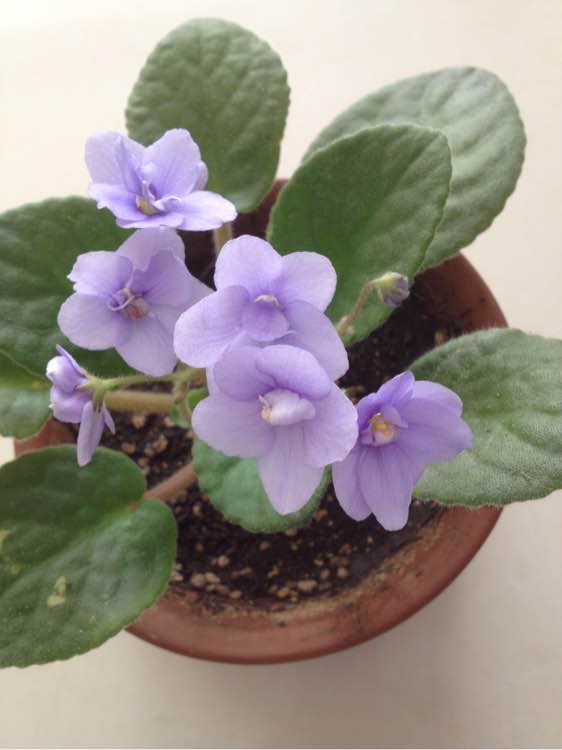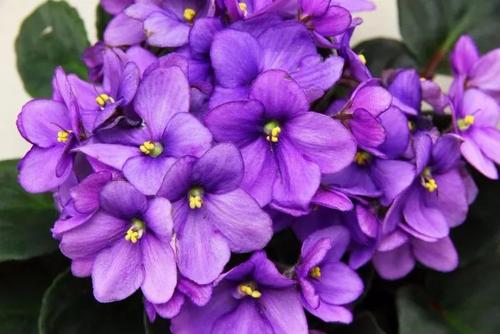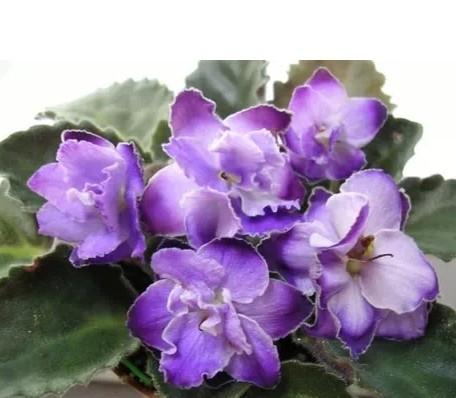African Violets Propagation Methods
Written by Maggie
Oct 16 2021

African violets is a kind of flower without a stem, the whole plant is hairy, the leaf is ovate, has a big flower, single, semi double, double, variegated, the color is purple, white, blue, pink and bicolor. African violets is a wonderful plant to decorate your bedroom with. Let's take a look at the propagation methods of African violets. The propagation methods of African violets include leaf insertion, seeding and plant separation, etc.. Usually, leaf insertion propagation is the main methods

African Violets Propagation from Leaf
Generally, leaf insertion propagation method of African violets can be carried out in spring and autumn. From strong growing plants, use a sharp knife to cut thick leaves with a 3cm or so petiole in the middle and insert them straight into a mixture of peat and perlite, or river sand. After cutting to water, and then keep wet, appropriate shade. Usually at about 23℃, 15-20 days, it can be root. Water spraying should be reduced after 8-10 weeks to form small plants. Large leaves can produce more than 10 seedlings, and we can choose strong seedlings transplanting. Generally, it takes 5~6 months from cutting to flowering. Also we can use the water insertion method, the petiole inserted in clean water, pay attention to change the water. About a month or so, it can also root into a seedling.
Notes for leaf insertion propagation method of African violets
One is that insert leaf method had better carry on in autumn, summer because temperature is high, life force is weak, success rate is lower;
Secondly, the substrate used for leaf insertion must be fresh, loose and breathable. The stale substrate is easy to be infected due to many bacteria.
Third, the cut leaves should be in the dark cool dry wound, which is very important, with the scissors inserted, easy to infect. Do not think that the cold dry will affect the vitality;
The fourth is the cuttage after the moisture, which can effectively increase the survival rate, until the root.
African Violets Propagation from Seed
Sowing time should be between September and October, when the sowing climate is suitable, easy to germinate, and conducive to growth, so that flowering can occur the following spring. Since African violets seeds are small, they do not need to be covered with soil after seeding, and keep the soil moist. Germination will take place at 20-25℃ for about 3 weeks. Pay attention to the timing of seedling, and the soil should not be too wet during seedling. It takes about 7 months from sowing to flowering.

African Violets Propagation from Strain
Combined with the turning of the pot, from the old plant off tiller with roots of small plants, planting can be.
African Violets Propagation from Stem
Stem insertion is also the method used by African violets propagation, mainly after the flowers fade in spring. The tubers were divided into underground tubers and planted in combination with turning the pot and changing the soil. The seedlings were formed quickly, but the plant shape was not good-looking enough, and the growth was not vigorous enough due to the lack of renewal of the plants.
African Violets Propagation from Tissue culture
At present, the popular propagation method of African violets is tissue culture method, which uses leaves, petioles and epidermal tissues as explants.1 mg/l 6-benzylamine adenine and 1 mg/l naphthoxyacetic acid were added to MS medium. After inoculation, adventitious buds were produced in 4 weeks, and rooting small plants could be planted 3 months later. The survival rate of small plants was 100% when transplanted into the substrate of leaf rot soil and peat moss soil. At present, the United States, the Netherlands, Israel and other countries have African violets test-tube production. But this way is not suitable for family farming. More about African violet care.

Latest Updated
- Benefits of Bugleweed - 7 Science-backed Health Benefits
- Bugleweed Dangers & Side Effects - Is It Poisonous?
- How to Plant Evergreen Trees - What You Should Know
- When to Plant Evergreens - Grow Guide for Evergreen Trees
- 12 Wonderful Evergreen Shrubs for Your Garden
- 12 Popular Evergreen Plants with Pictures for Beginners
- When And How To Prune A Lilac Bush Like a Pro
- How to Grow & Care for Lilac Vine (Hardenbergia Violacea)
- Japanese Lilac Tree (Syringa Reticulata) Care & Propagation Guide
- Shumard Oak Pros and Cons - What to Know
Popular Articles
- Winter maintenance of Antirrhinum Majus
- How to Grow Terminalia Mantaly Tree
- How to Grow and Care for Crossostephium Chinense
- How to grow Antirrhinum Majus in spring
- Peristeria Elata (Dove Orchid) Profile: Info & Care Guide
- Underwatered Snake Plant (Sansevieria Trifasciata) - Signs And How To Fix
- How to Care for Brazilian Jasmine Plant (Mandevilla Sanderi)
- How to Grow & Care for Graptopetalum Purple Delight in Summer
- Rosa Chinensis (China Rose): Plant Growing & Care Tips
- How to Care for Baby Sun Rose (Aptenia Cordifolia)